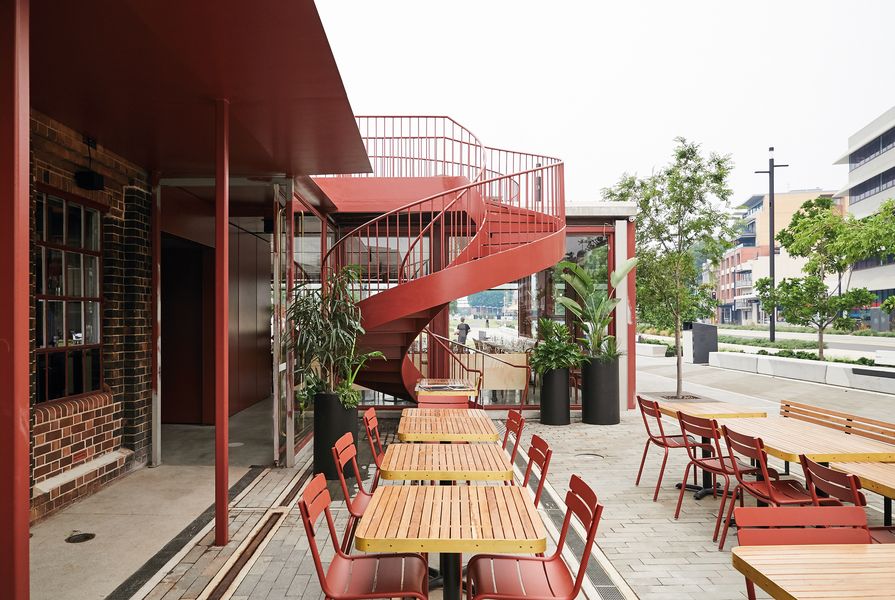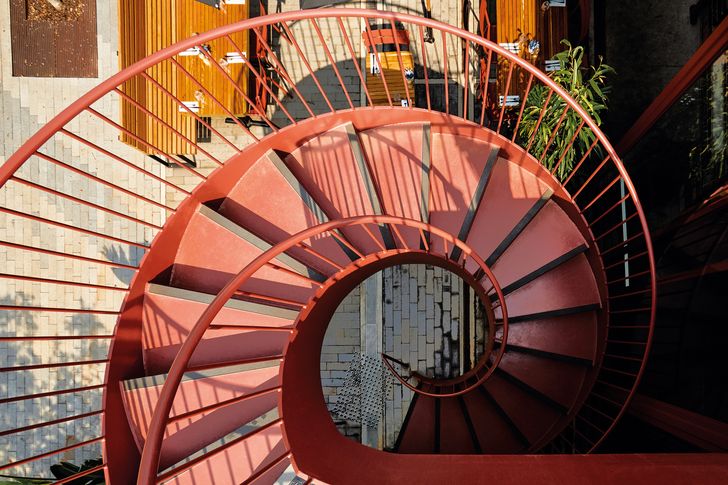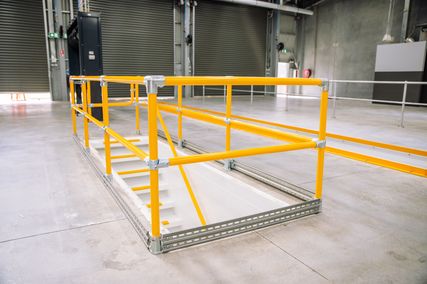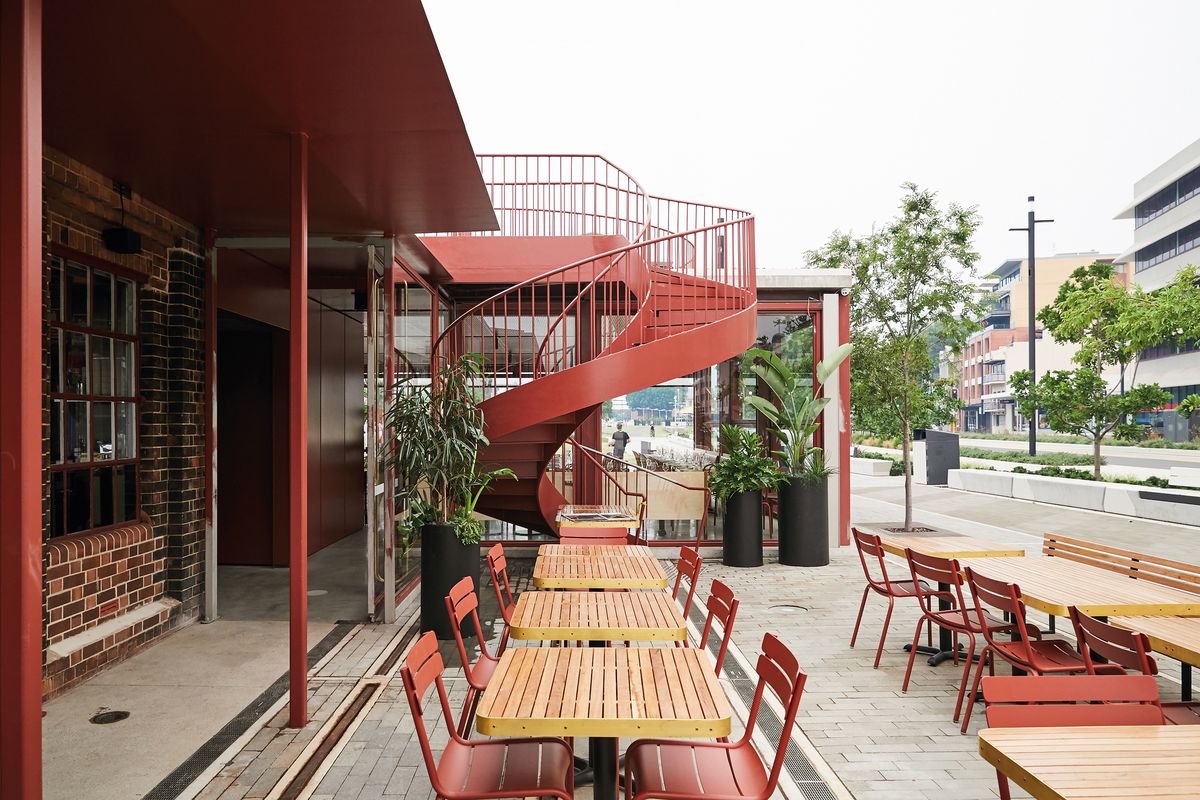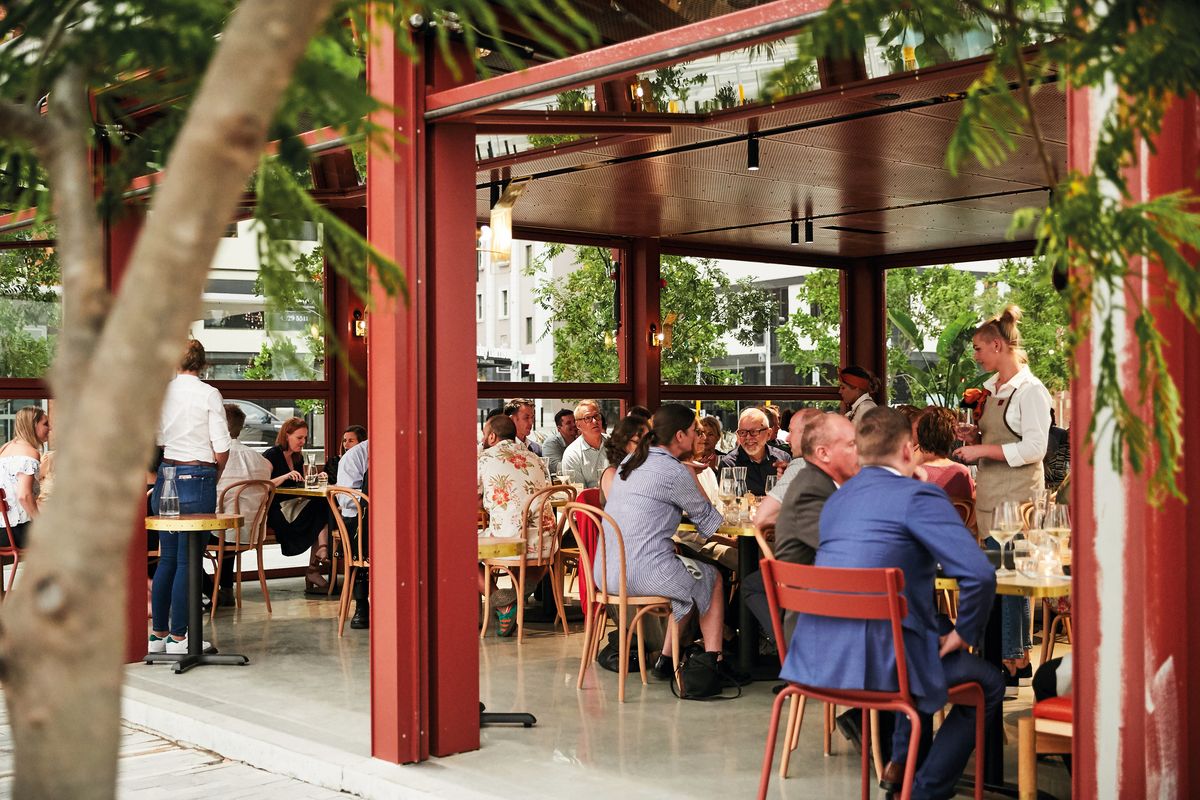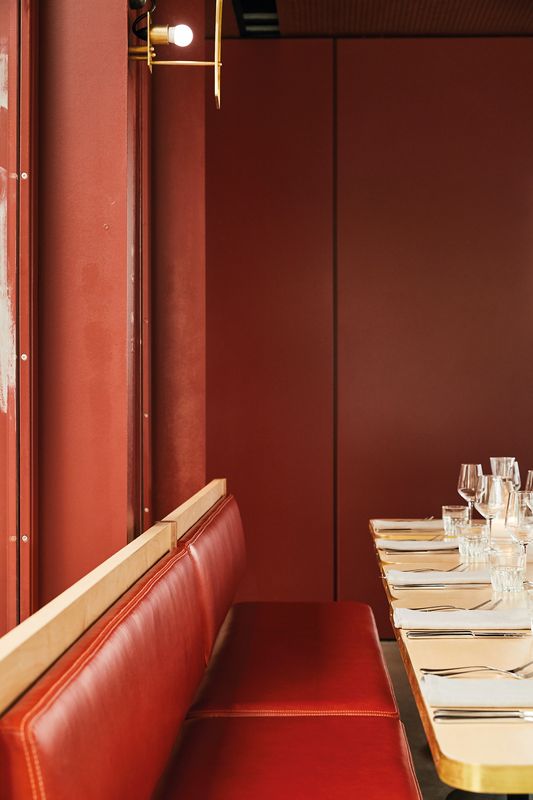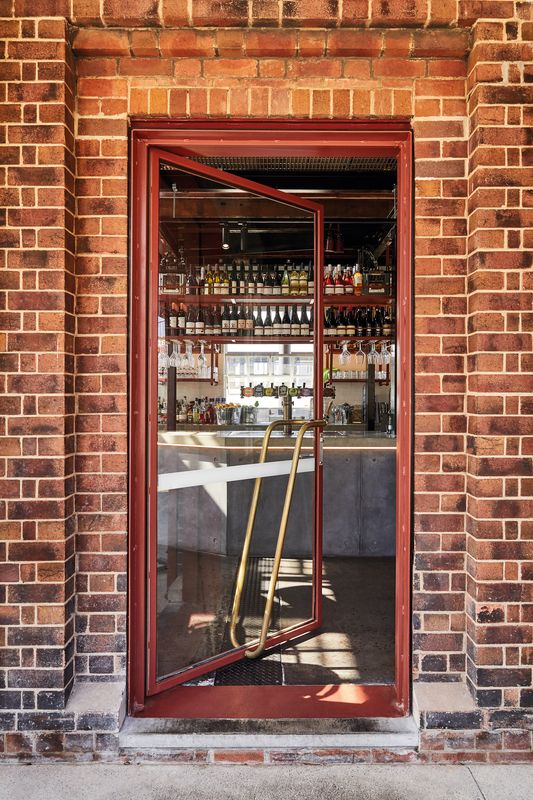In visiting the Signal Box – a wonderful return to the public realm of a heritage railway building – architect Jason Elsley of Derive Architecture and Design and I kept talking about big principles, big agendas. We talked about them through the project, which in itself is very small. We talked about urban infrastructure, about democracy and the civic aspirations of urbanism. We discussed the need for conservation practices to shift from western cultural heritage toward sustainability and carbon sequestration, and toward the archaeology of multiple ages: western and Indigenous. Such big talk sat comfortably within a tour of a building made up of only two nine-by-nine-metre footprints.
The project is centred on a vestigial brick “Type O” signal box structure with two siblings in Australia and many more in England, and it adds a new dining building and a small connecting “bridge” element. It sits within a broad rail reserve – the heavy rail has been decommissioned in Newcastle, leaving behind a tract of urban land. The Signal Box occupies an important space in the city both spatially and historically, and it incorporates a constellation of small heritage amenity structures.
The pavilion’s facades are divided into three glazed door partitions to reflect imperial proportion systems commonplace in railway geometry.
Image: Alexander McIntyre
Derive’s addition is highly transparent. It is glazed on all sides – you can see through it from the street toward the harbour – but the walls are also operable, lifting up to form an open pavilion. There’s a generosity to this gesture, as well as in the permeable edges of the outdoor dining spaces, their boundaries defined only by furniture. And, via an impressive, self-supporting steel spiral stair, the public realm continues onto the roof of the new dining space. Derive argued for this terrace to be accessible to all, providing an expansive vista to the city and harbour. Its floor level matches that of the upper storey of the Signal Box, placing the visitor at train-conductor’s eye level. A circular concrete floor and curved steel balustrade reference the railway turnpike that existed beneath. Within the Signal Box itself, you can access the conductor’s platform, which still contains the incredible machinery and levers of the rail control system, including a corresponding map populated with electric bulbs for stations.
There is tiny detail to absorb in both the original and new constructions. Elsley points out to me a beautiful detail in the original spiral stair, where a steel strap bends down, on a tight radius, to join to a vertical strap, the two cinched together with a bolt. This design is echoed in a suspended bar structure that Derive has created nearby. An elegant, colonnaded canopy – a steel plate sheet with a gentle bend to direct water into hollow columns – folds up to sidle against the bricks of the original structure. Doors and windows have been painstakingly edited and re-hung.
The impressive self-supporting stair is generous in nature, allowing the public realm to continue onto the roof of the new dining space.
Image: Alexander McIntyre
We began and ended our site visit talking about ownership: first about the importance of the clients’ investment in the scheme. The details mentioned above would not have been possible without a decades-long tenancy. Procuring architecture under lease is rare in Australia, but popular in Europe, and this project demonstrates the value that it brings to the architecture and by extension the urban realm. We talked about the sense of ownership the tradespeople felt in the project. With at least six steelworkers contributing to it, the fabrication is finely wrought and the construction carefully curated. I admired the corner of the new dining space: two steel flanges hug a rain-head perfectly, the rainwater pipe housed between them – how many hands came together there? The balustrade to the stair and roof terrace is solid and small in diameter – a fineness you don’t see in municipal handrails anymore. The investment of all parties involved with the construction is made clear in the quality of the work. Finally, we talked of the efforts to democratize and open up the project, to overturn as much of it as possible to the public realm: of cultivating civic ownership.
The Signal Box honours the rail reserve as an urban thread that belongs to the duration of Newcastle city. It is a catalyst for further, acupunctural interventions. Should a public landscape emerge in the rail reserve, punctuated by thoughtful projects like Derive’s, the ultimate urbanity of this infrastructure might be realized: sinuous, continuous, and confounding the city-block. Should such an infrastructure connect to the elevated datum of train-director and ship deck as the Signal Box does, but also excise down to reveal a deeper history – of turnpikes and ballast – and further still – of middens and bygone river edge, what an immersive and wondrous territory that would be.
Products and materials
- Walls and ceilings
- Steel plate external walls and steel and aluminium plate internal walls, all painted in Dulux ‘Matt Red Oxide.’ Custom perforated panel ceilings painted in Dulux ‘Matt Red Oxide.’
- Windows and doors
- Steel-framed windows and doors from Red Steel and Weldtech. Lockwood Level 70 door hardware in aged brass.
- Lighting
- Track lighting system from SAL. Brass wall sconces custom designed by Derive Architecture and Design and fabricated by Imagiron.
- Furniture
- Thonet No. 18 chair in raw beech from Thonet Australia.
Credits
- Project
- The Signal Box Pavilion by Derive Architecture and Design
- Design practice
-
Derive Architecture and Design
- Project Team
- Jason Elsley, Lauren Maher
- Consultants
-
Builder
David Bakker
Engineer Northrop Consulting Engineers
Landscaping JMD Design
- Site Details
-
Location
Newcastle,
NSW,
Australia
- Project Details
-
Status
Built
Completion date 2021
Design, documentation 9 months
Construction 10 months
Category Commercial
Type Restaurants
Source
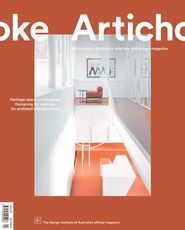
Project
Published online: 6 Oct 2021
Words:
Beth George
Images:
Alexander McIntyre
Issue
Artichoke, June 2021

